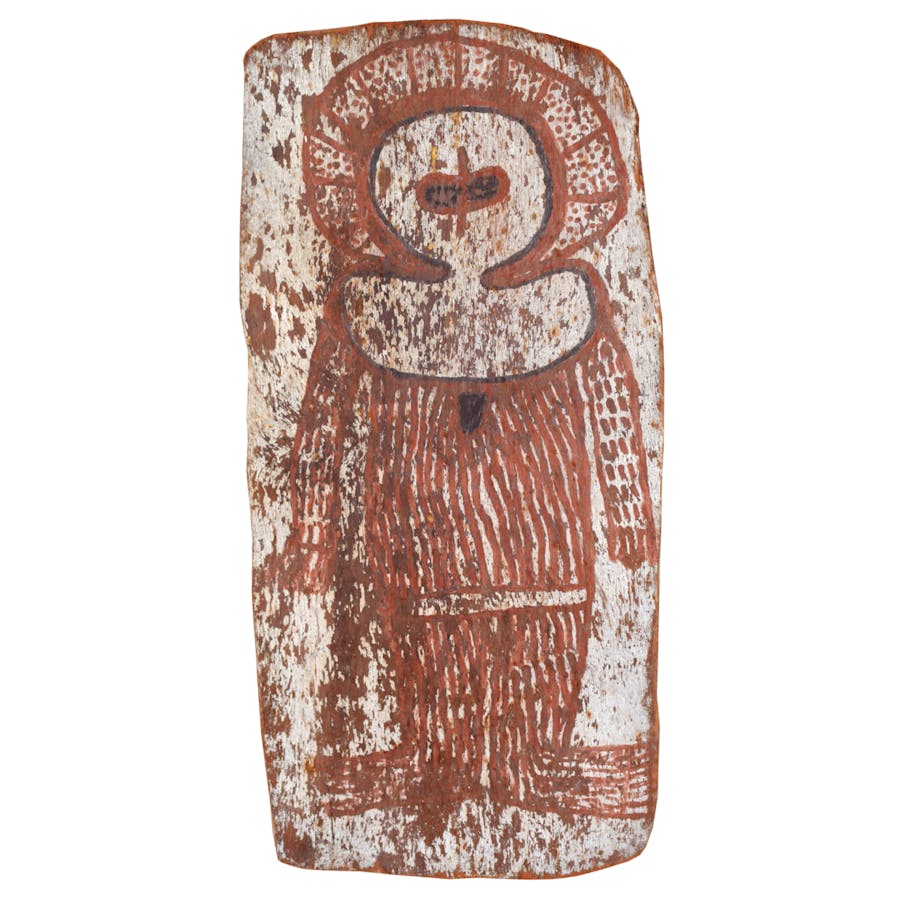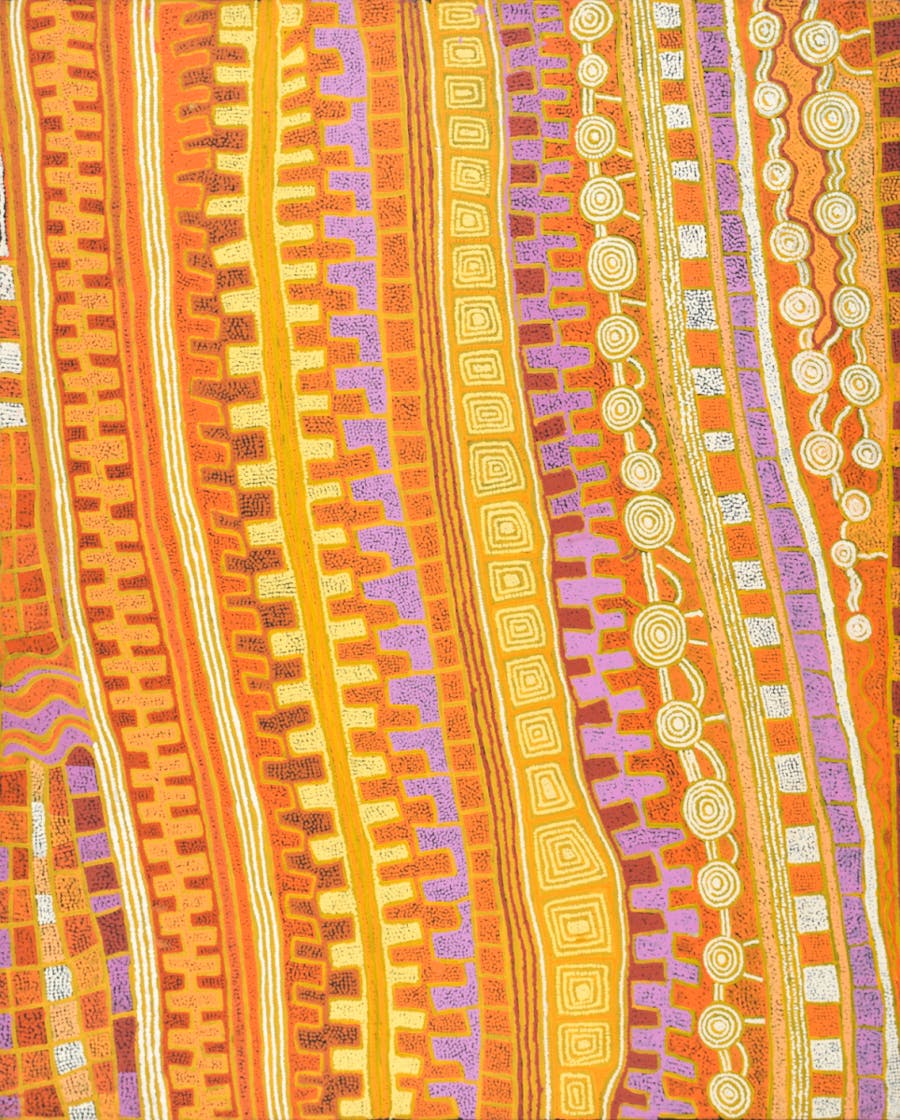The Best of Australian Aboriginal Art
An upcoming auction features nearly a hundred incredible works of Australian Aboriginal art at all price ranges.
Australian Aboriginal art is in the spotlight on the international art scene recently through major museum shows and auction house records. Artists have interwoven elements of Aboriginal heritage into their art, including mythology, natural materials, spirituality, landscape, pattern and travel.
On 23 June, Cooee Art MarketPlace, a Sydney auction house, will offer a sale of Aboriginal fine art. The works are in all price ranges to attract a variety of collectors, from a couple hundreds pounds to tens of thousands. Here are some of the highlights of the collection:

Wandjina (1975) by Alec Mingelmanganu comprises natural earth pigment on bark. His works first came to public attention in 1975, when during a art competition the judge thought it was an early ethnographic piece. Later learning it was actually an original contemporary piece, Mingelmanganu was awarded a payment equivalent to the first prize. In this piece, Mingelmanganu's unique work honours the traditions of Kimberley Aboriginal art, depicting a sacred Wandjina figure (the cloud and rain spirits of Aboriginal mythology).

In Western MacDonnell Landscape (1950), Albert Namatjira captures the Australian outback in watercolour over pencil on paper. Namatjira was part of the Hermannsberg school, the first significant transitional art movement to emerge from Aboriginal Australia, and lushly reflected the natural beauty of his native land, from the deserts to the valleys, in rich colour and dramatic vistas.

Rover Thomas did not start his artistic career until the age of 50. Before that, he lived a traditional bush life and then travelled on the stock routes of northern Australia. In the late '70s, he became a cultural leader and established the East Kimberley painting movement. Warmun – Map of Turkey Creek Community (1983) is from this time and his characteristic of his style, creating a map through trails of white dots delineating the sites and pathways of ancestral and historical significance and his own travels through Australia.

Puntujtalpa (2005), an artwork of patterns of spirals and geometric shapes, is the landscape of a site in the Western Desert associated with the mythological Tingari beings, who travelled over vast stretches of the country to establish sacred sites. Patrick Tjungurrayi painted this in synthetic polymer paint on Belgian linen.


